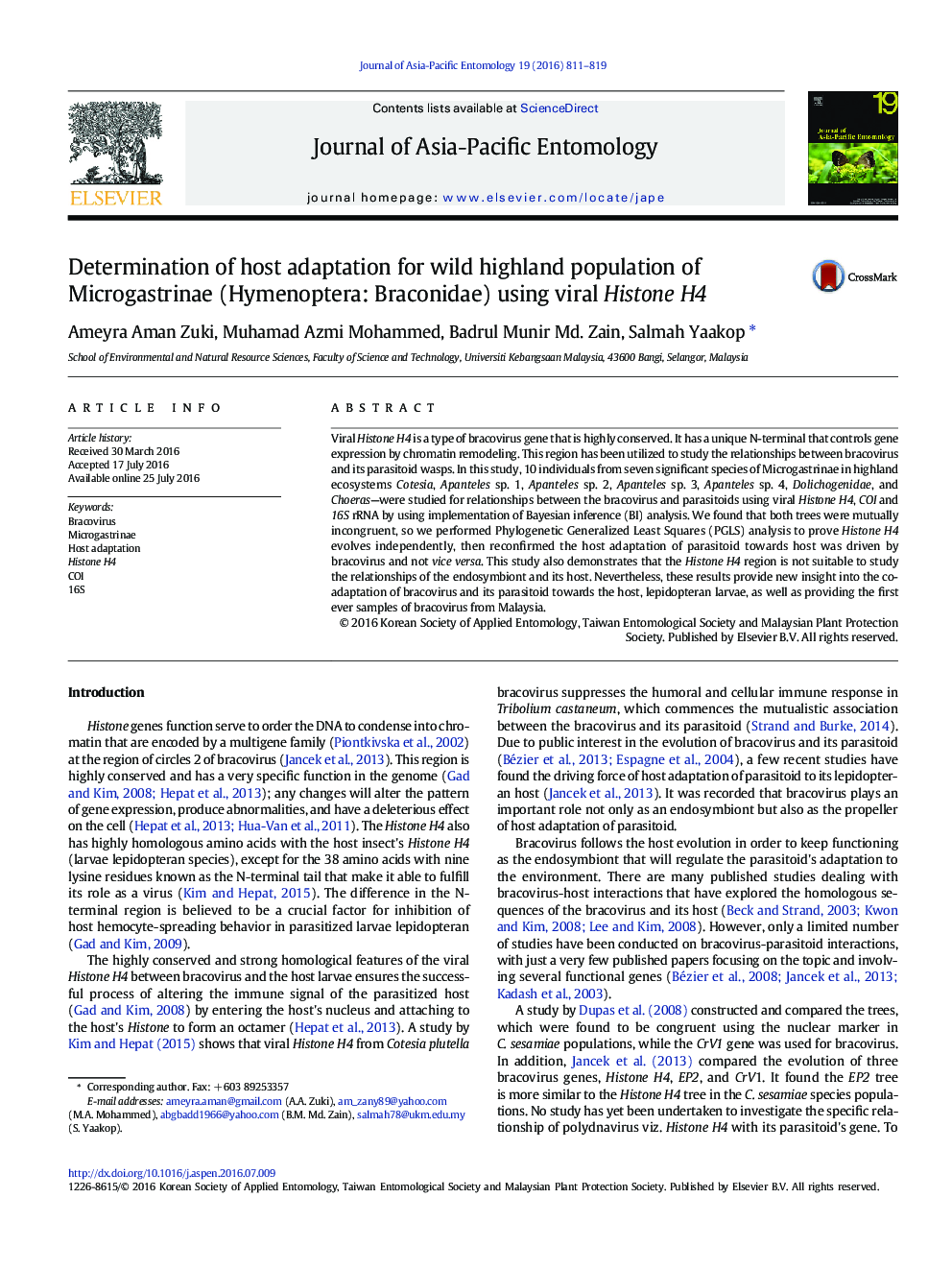| Article ID | Journal | Published Year | Pages | File Type |
|---|---|---|---|---|
| 6380151 | Journal of Asia-Pacific Entomology | 2016 | 9 Pages |
â¢Relationship of bracovirus-parasitoid wasp (microgastrines) was studied.â¢Microgastrines COI and 16S phylogeny gave different resolution from BV Histone H4.â¢PGLS analysis confirmed the independence of microgastrines bracovirus trait.â¢BV Histone H4 evolves independently and drives the adaptation of microgastrines.â¢Bracovirus reconfirmed to drive the highland adaptation in microgastrines.
Viral Histone H4 is a type of bracovirus gene that is highly conserved. It has a unique N-terminal that controls gene expression by chromatin remodeling. This region has been utilized to study the relationships between bracovirus and its parasitoid wasps. In this study, 10 individuals from seven significant species of Microgastrinae in highland ecosystems Cotesia, Apanteles sp. 1, Apanteles sp. 2, Apanteles sp. 3, Apanteles sp. 4, Dolichogenidae, and Choeras-were studied for relationships between the bracovirus and parasitoids using viral Histone H4, COI and 16S rRNA by using implementation of Bayesian inference (BI) analysis. We found that both trees were mutually incongruent, so we performed Phylogenetic Generalized Least Squares (PGLS) analysis to prove Histone H4 evolves independently, then reconfirmed the host adaptation of parasitoid towards host was driven by bracovirus and not vice versa. This study also demonstrates that the Histone H4 region is not suitable to study the relationships of the endosymbiont and its host. Nevertheless, these results provide new insight into the co-adaptation of bracovirus and its parasitoid towards the host, lepidopteran larvae, as well as providing the first ever samples of bracovirus from Malaysia.
Graphical abstractDownload high-res image (173KB)Download full-size image
